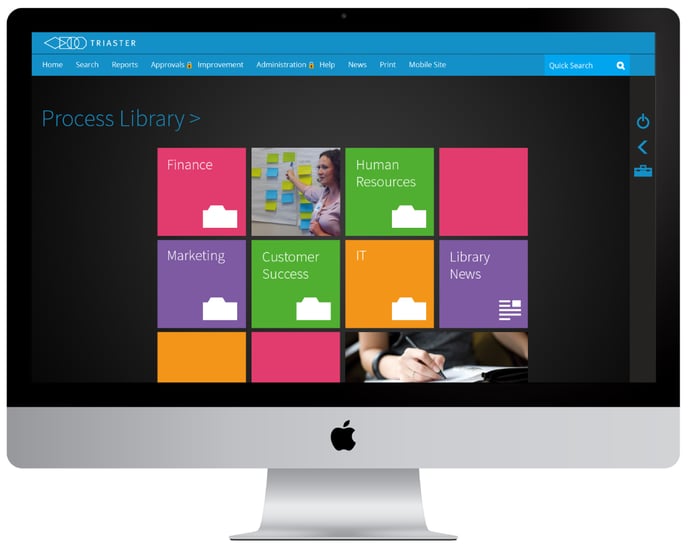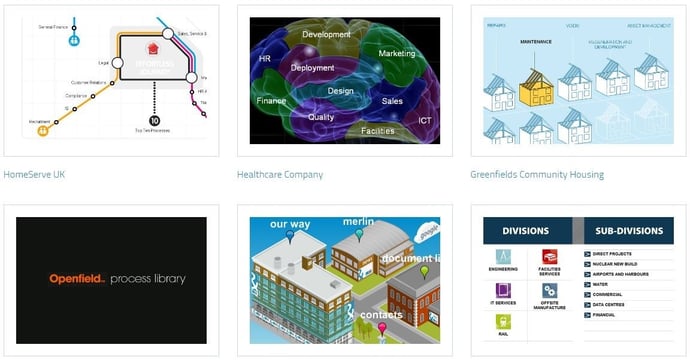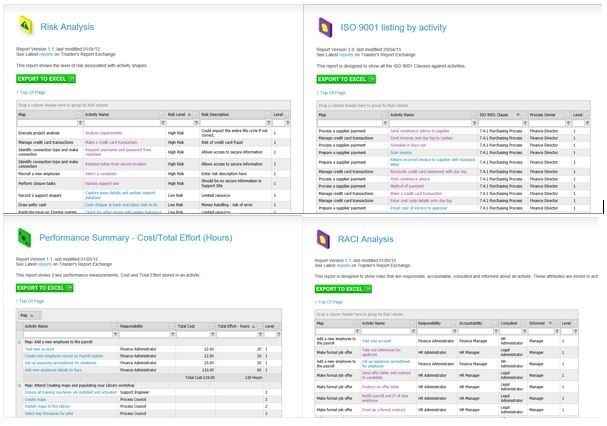Triaster has spent over 20 years in the Business Process Management software space and has learned a thing or two about what works and what doesn’t during this time. We believe that your Business Process Management Software System (BPMSS) should be the single source of truth for your organisation’s “how to” material. It should be accessible to all, easy to use and look good.
This article focuses on the BPM software system functionality you need to have to ensure that your new BPMSS is going for gold - from the get go.
1. Your Business Process Management Software System Must Include a Workflow
Having felt the pain of trying to manually get process maps and documentation approved and reviewed – I believe that having a workflow to support this process is an absolute minimum.
You should be able to create content and store it in a shareable location in its first iteration. The last thing you want to be doing is sending the actual document to different people to peer review, who may be able to edit the document and undo some of your hard work.
Ideally, your BPM System will be able to publish your content to HTML so that your colleagues can review it and provide feedback all while viewing it on the web.
Then, when ready, you can push the content up the chain for a formal approval by just pushing the button in your BPM System so that it sends out alerts to subject matter experts and department heads, to inform them that they have content to approve.
At this stage, your BPM System should support the approvers (i.e. enable them to easily approve content if it is acceptable) or reject it if not.
Upon approval or rejection of a process map, auto-incrementing of the version and revision numbering should be mandatory, as well as storing comments from the approvers as to why the content has been rejected, in a change history report.
The review and approval process should be cyclical, and your BPM System should automatically enable this.
Without the ability to automate this process, you will spent much of your time chasing approvers and reviewers and trying to record and document your paper trail, which adds no value to your organisation.

2. Your BPM System Must be Accessible
Your process management software must be easily accessible to the entirety of its intended audience. Time and time again Triaster has been approached by disgruntled users of BPM Systems who have spent days, weeks and months creating content for their organisations, which can then not be viewed without purchasing a viewer licence.
At Triaster, we feel that your BPM System should sit at the heart of your organisation – assisting users to successfully carry out their roles and supplying all the information to help them get things right the first time. Your employees should not need to purchase the right to view their content. Take a look at some of our BPM System comparisons here, here and here.
We recommend having a link to your BPM System on all users’ desktops, and a link into the system from your intranet site, as well as an easy to remember web address.
It is also a good idea to create a brand for your BPM System, and use the branding in all communications regarding the system – take a look here at how some of our customers have created striking brand identities for their Triaster BPM Systems.

3. Your BPM Software Must Include an Easy to Use Process Mapping tool
Your BPM System should include a simple to use process mapping tool. This is for a few reasons:
- Firstly, you don’t want to be spending vast amounts of time and money on keeping your authors/creators refreshed on how to use a complex tool.
- Secondly, if the tool is complicated to use, your authors/creators will become frustrated and not enjoying using it – there will eventually be a slowdown in creation/amends and progress will halt.
There should be an easy way for people to create content for your BPM System and an easy way for them to submit it to the system, which should then take the content on an approvals/reviewing journey as appropriate.

4. Your BPM System Must Allow for Customisation
As mentioned earlier, at Triaster, we believe that your BPM System should lie at the heart of your organisation. It should also look and feel as though it belongs to the organisation. Your BPM System should give you the ability to customise the entire system according to your company’s brand guidelines. Take a look here at some examples of customised BPM Systems Triaster have implemented for customers in all industries.
The customisation element can be a bit of a balancing act, because you want the system to look and feel interesting, and in line with your company’s brand guidelines – but you also want to keep it simple so that users can get in, grab the information they need and get out as quickly as possible.

5. Your BPM System Must Allow you to Collect and Report on Metadata
The ability to store, report on and use metadata within your BPM System should been seen as an absolute necessary. This metadata can turn your BPM System from 2D to 3D. It provides the company with the ability to carry out many projects using the BPM System as the base.
Types of data we’d recommend that you record within the process maps in your BPM System are:
- RACI Matrix
- Risk
- Process Metrics (Cost, Time, Frequency of Occurrence, Value Stream…)
- Regulatory Clauses (ISO 9001, Sarbanes Oxley, ACoPL8…)
- Process management date (Author, Process Owner, Approvers, Reviewers, Version, Revision…)
Your BPM System should provide you with the ability to quickly and easily pull this data out in the form of reports, or searching. Take a look here at an example of a Process Comparison Report generated from a Triaster BPM System. You can see a whole range of reports from a Triaster BPM System here.

There are of course many BPM systems and the most important ‘must have’ is that the one your organisation uses, best meets your organisations requirements and needs.
To take the next step and find out how a BPM software system can improve your processes, sign up for our free introductory webinar:
Related articles:
Best Business Process Management (BPM) Software: A brief review
IBM Blueworks vs Microsoft Visio: Which is the best Business Process Management software?
How much does Business Process Management (BPM) software cost?
Written by Joel Evans
Joel joined Triaster in June 2014 and spent several years delivering consultancy and training services on site with customers, helping them to achieve many different business improvement objectives, in many different corners of the world. He left Triaster in November 2016 in order to move back closer to family.
